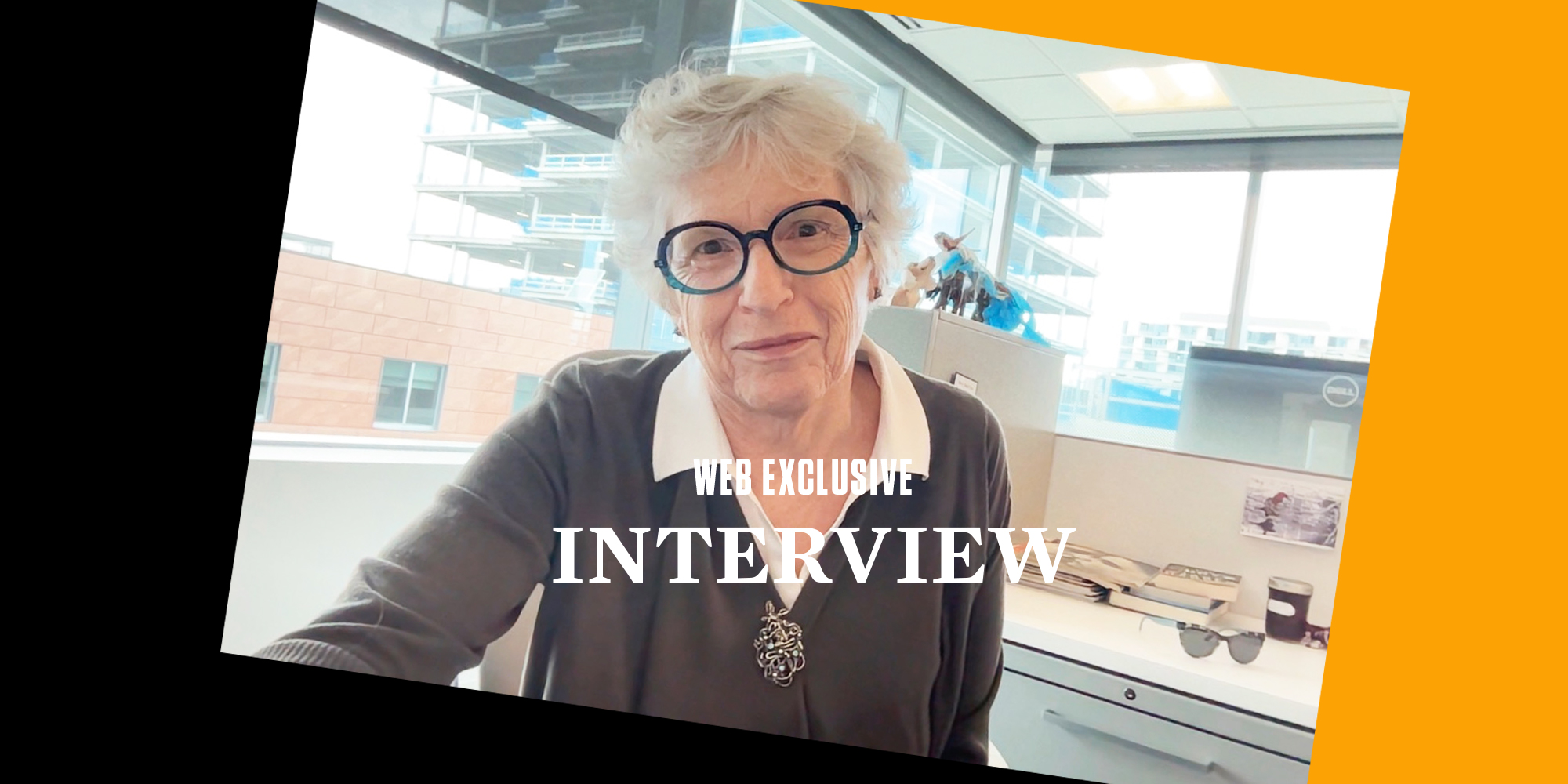
The Magazine’s newest writer interviews its longest-serving editor.
The University of Chicago Magazine, under the editorship of Mary Ruth Yoe, hired its first Metcalf Intern in 1997, the year the program was launched. A few months before her July retirement, Yoe sat down with the Magazine’s current Metcalf Intern, Isabella Romeu, Class of 2026, to share stories about her early years as editor and offer a few parting words of advice.—Carrie Golus, AB’91, AM’93
What impressions did you have of UChicago before you arrived?
My mother loved the University of Chicago, because in the 1940s she was a fan of the radio program The University of Chicago Round Table. Every week different professors discussed something of interest. When I was in high school, I thought about applying, but my father thought it was too far from our home in Maryland.
What do you think the role of an alumni magazine should be?
When you’re a student, you’re an insider. You have a front row seat. You know that not everybody on campus agrees all the time. And in the era of the internet, alumni have multiple sources of information about their alma maters available to them in seconds.
So once you graduate, if you get a magazine that tells you, “Hey, we’re all happy all the time here,” it’s not believable, and you stop reading it.
An alumni magazine should tell the University’s side of the story, but ideally it also includes a diversity of opinions. That keeps you reading it. Otherwise, you throw it in the trash. Or hit the delete button.
When you first arrived, the Magazine’s offices were in the Robie House. What was that like?
It was great. The Magazine was in the garage, which is now the Robie House gift shop. My office was the furthest to the east and had a sprinkler system for washing cars. One time the system went off over the weekend and I was called in to clean up the mess before photos and papers turned into papier mâché.
Jay Berwanger [AB’36, first winner of the Heisman trophy], the Magazine’s former sports editor, would park in the garage courtyard when he came to campus. One time there was an incident when Berwanger drove into the wall of my colleague’s office. No one was hurt, but it was quite a bang.
You were also mentioned in a New York Times article about it.
In 2012, the Times did a story on the Robie House’s restoration. I joked to the reporter that eating lunch, especially eating a banana, while lunchtime tourists looked into our office windows felt like being a great ape at the zoo, and he used that as the opening line.
Back in 1957, the Chicago Theological Seminary wanted to buy the house, tear it down, and build a dormitory, until Frank Lloyd Wright intervened. Later it was donated to the University.
By 1980, the Alumni Association had moved in, and efforts began to restore the house, including recreating the dining room’s light-colored carpet from Austria. So there was a strict no-red-wine policy for events, unless Mrs. Gray [Hanna Holborn Gray, then the University’s president] was hosting. She was known for her good hosting and believed in pairing red wine with red meat.
I’ve been told that as an editor, you can always spot a double entendre other people miss.
I’m wary of unintended double entendres because they can make us look unprofessional.
So can intentional double entendres. For example, in the early 1980s, an alumni publication where I worked ran a piece on a sperm bank targeting Nobel laureates as donors. The writer used verbs like “ejaculated” instead of “exclaimed,” which the Nobel laureate who was interviewed found offensive.
What is your favorite story that you’ve ever published in the Magazine?
I don’t have a favorite story, but I do have two favorite issues. One was for the 100th anniversary of the University in 1991–92—back then the University defined its founding as the first day of classes in 1892 rather than its incorporation in 1890. The issue included a foldout timeline at its center and fascinating pieces from the Magazine and University archives. We had so much fun creating it.
Another favorite issue was the first day of the University’s second century. We had eight writers and multiple photographers, some even in France, capturing what faculty, students, and staff were doing that day.
Is a picture worth a thousand words?
In terms of immediate impact, it is. But we had a designer who used to say, “If one picture is worth a thousand words, two are worth 500, three are worth 333.”
You really have to pick the best photo and make sure the others on a spread are secondary to it. Otherwise, the reader doesn’t know where to look.
What’s a story do you wish you had never published?
There’s not a single story I regret, although I do regret certain sentences in many stories—over the years, readers have pointed out mistakes of fact or emphasis or careless editing on my part.
One of those bits of careless editing even made it to the New Yorker. They have those fillers at the bottom of a page or column and my sentence was headed “Misplaced Modifiers.” They didn’t include my name, but they did put the University of Chicago Magazine. I always wondered who sent that in—and why they didn’t cc me!
Any advice you would give for someone who wants to pursue a career in magazines?
Learn how to observe. And try to imagine what your reader will be most interested in.
